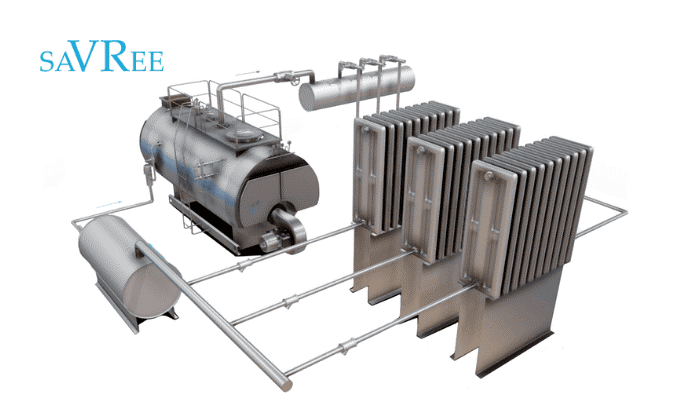
The Role of Simulation in Safe and Effective Engineering Training
In the fast-changing world of engineering, Safety and Operation Efficiency are paramount. The safety and efficiency issues are best highlighted within the oil and gas world when you consider the high-risk nature of the environment, the need for precision, preparation, and knowledge. Traditional training methods in engineering have simply not been able to keep pace with the increase in complexity of the industry. Classroom lectures, textbooks, and sometimes on-the-job shadowing are not sufficient. Organizations are now using simulation-based training as a method to better prepare engineers for real-world activities safely and efficiently.
This article will discuss the role of simulation in engineering training, with special reference to the oil and gas industry, and will explain how platforms like saVRee are leading the charge by offering highly interactive and practical e-learning products, including Online Courses for the Oil and Gas Industry.
Why Traditional Training Falls Short
For several decades, engineering training was solely done face-to-face, in a written format in technical manuals, or through real-life observation. While these are successful to some level, they do come with their own limitations:
- Safety concerns: The more direct the experience for the learner in a hazardous environment, the more candidates are at risk for accidents or near-misses.
- Costly: Operating equipment for training purposes consumes time, energy, and resources, driving up expenses.
- Accessibility: Not all learners have access to specialized training facilities, or the skills and equipment are too costly for regular access.
- Retention: Without practical interaction, theoretical lessons are often forgotten quickly.
As engineering projects are increasingly complex, and the global demand for skilled professionals rises, the search for alternative learning and training pathways has never been greater.
Simulation as a Game-Changer in Engineering Training
Simulation technology has emerged as a game-changing tool in the realm of technical training. When realistic systems and processes are simulated in a digital environment, learners can practice learning skills hands-on without posing a risk to themselves or their environment. Here’s how simulation is changing engineering education:
1. Safe Learning Environment
Simulations provide the opportunity for students to make mistakes, practice decision making, review the impacts of their mistakes, and then experience the learnings from their mistakes; all without exactly harming anyone or anything in the real world – including equipment or the environment. The precaution has significant value to industries that include oil and gas.
2. Cost-Effective Training
Training and education with actual equipment or at offshore rigs costs considerably more than simulation training and can be impractical. Simulating is cost-effective, as real equipment is not needed, but it does allow realistic experiences.
3. Better Retention and Engagement
Interactive computer simulations are engaging because they use more than one sense for learning. Most learners are passive as they read books, whereas with simulations, they are actively engaged in real-life experiences.
4. Scalable and Available
Simulations can be delivered online, so engineers around the world can access the training at any time. Simulations have the capacity to scale and allow for workforce development in global companies.
5. Development and Performance Data
Simulations are often associated with performance data tracking, so instructors can track, measure progression, identify weaknesses, and provide better personalized learning paths for all learners.
Simulation in the Oil and Gas Industry
The oil and gas industry is one of the most hazardous industries in the world. Workers are working in and around high-pressure systems, exploitable materials, and some pretty harsh conditions. When it comes to preparing workers for conditions like this, you will need technical knowledge, the ability to put that knowledge into practical application, and confidence. Training in situations like this requires technical knowledge, the ability to bring that knowledge into practice, and confidence.
Simulations expose engineers to situations such as:
- Controlling pressure on drilling equipment
- Dealing with changes in the system that malfunction or break down
- Practicing emergency procedures in hazardous working environments
- Dynamics of fluid and thermodynamics developed in real time
By digitally imitating these experiences, engineers are able to learn more about how to respond quickly and effectively without putting anyone’s life, equipment, or tool on the line.
saVRee’s Contribution to Simulation-Based Training
saVRee has positioned itself as a leader in providing simulation-rich, interactive e-learning for the engineering population. The training is offered through a combination of 3D models, animations, and interactive lessons that allow the learner to gain a full understanding of engineering systems.
The key features of saVRee training include:
- Interactive 3D models: Learners can rotate, zoom, and explore equipment virtually, as they would in the real world.
- Video-based instruction: Complex engineering concepts are communicated clearly through visual learning.
- Simulation-based modules: Safe environments where learners can apply theoretical knowledge to practical situations.
- Industry-specific offerings: Including Online Courses for the Oil and Gas Industry, providing training to personnel in critical processes and systems.
The integration of visual learning and simulations enhances the learner’s experience, making the training safer and much more engaging than traditional types of learning.
The Benefits for Engineering Professionals
Simulation-based learning not only helps companies, but it also changes how engineering professionals advance their careers. The benefits may include:
- Increased confidence: Trainees report improving their preparedness to act in situations they will encounter in the real world after rehearsal in a simulated setting.
- Career progression: If you acquire technical skills through structured training modules that are recognized, then you will receive potential for employment as well as an opportunity for career progression.
- Flexibility: Engineers know how to adjust to any situation that they may face- the unforeseen accident, the emergency, and the failure of the system.
- Lifelong Learning: Practicing skills through online and simulation-based courses means the professionals can continuously develop their skills while still in their jobs.
Future Outlook: Simulation and Engineering Training
There is no doubt that the future of engineering learning is digital and driven by simulations. Emerging technologies like augmented reality (AR), virtual reality (VR), and artificial intelligence (AI) simulations will further enhance these programs by providing hyper-realistic environments in which learners can train ‘on site’ without even being there.
When we consider the oil and gas industry specifically, where everything is time-sensitive, there is always a risk, and should there be mistakes, the consequences are catastrophic. Simulations will continue to help prove safety, efficacy, and sustainability. Companies that embrace existing and new technologies will not only ensure a safe workplace but will also help create efficiencies and sustainability for their long-term success.
Conclusion
Simulation is now a key part of engineering training, linking theory to practice, and provides a safe, affordable, and enjoyable method of learning for engineers and other professionals, especially in dangerous industries like oil and gas.
Organizations or individuals looking for quality simulation-based training should look into saVRee. They sell innovative online training in the form of interactive 3D models, video-based programs, and a dedicated Online Course for the Oil and Gas Industry. saVRee is leading the way to safer and more valuable engineering training worldwide.
The future of engineering training will hopefully be not only safer but it also has the potential to be more accessible and impactful through simulation.
